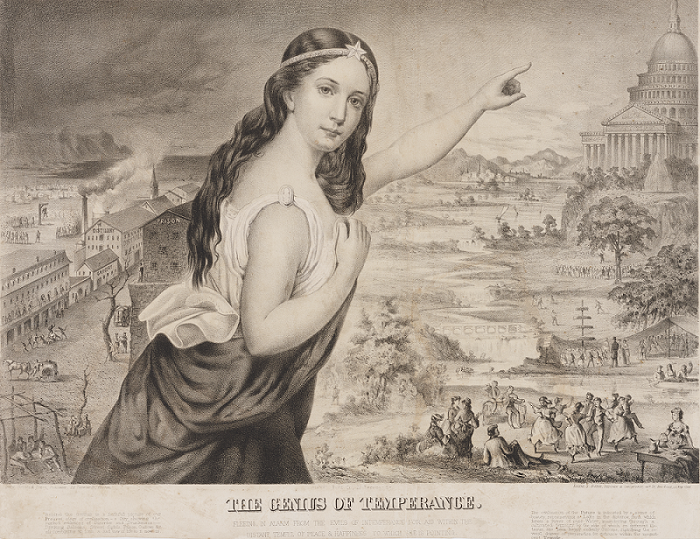Background
Women led a resurgence of the temperance movement in the 1870s. The movement had started in the 1820s, led by Protestant churches and their female volunteers. Temperance activists were concerned about the effects of liquor on men’s behavior and society in general. The concern over a rise in alcohol consumption in the decades following the Civil War was fueled in part by large waves of immigrants from Europe, who brought a strong drinking culture with them. Temperance activists often reflected the anti-immigration language of nativists, describing the immigrants’ drinking culture as immoral and un-American. Industrialization and immigration also led to the growth of cities, which temperance activists viewed as hotbeds of immorality. They believed that urban drinking establishments encouraged drunkenness, which would result in other immoral behavior.
Temperance activists initially attempted to discourage the consumption of alcohol among individuals, with a particular focus on men. When the number of immigrants increased, they shifted their focus to a total ban on liquor sales. They then used the growing women’s club movement to organize on a national level. Women’s clubs were organizations formed by women that provided members with educational and community service opportunities. Activists encouraged existing women’s clubs to take on the issue and established new organizations that focused on temperance. The Woman’s Christian Temperance Union (WCTU), established in 1874, led the efforts to ban alcohol consumption. By 1890, the WCTU was the largest organization of women in the world.
About the Image
This print promises a beautiful future for America—without alcohol. The large allegorical figure Genius represents temperance. She reflects the pure ideal of womanhood as a white woman. Genius points towards a utopian future on the right, with a large temple and a beautiful landscape. The people look happy and well-dressed. They are dancing, boating, and socializing. The scene on the left, behind Genius, shows a town ruled by “disorder and drunkenness.” Factory smoke fills the air. There is no green space, and people fight in the street and gather to watch a public hanging.
Vocabulary
- allegorical: Symbolic or figurative.
- nativists: People who believe native-born citizens should be favored over immigrants.
- temperance: Not drinking alcohol.
- utopian: Idealistic or perfect.
Discussion Questions
- What do the two scenes in the image represent? What message is being conveyed?
- What was the main goal of the temperance movement?
- Why might the artist have decided to use a white female figure to represent the temperance movement? How does it reflect the perceptions of womanhood and morality at the time?
Suggested Activities
- APUSH Connection: 6.11: Reform in the Gilded Age
- Explore discussions around women and morality during this time by combining this resource with the Comstock Act and the Page Act.
- Consider discussions of morality in Black women’s clubs.
- Pair this resource with the cartoon of Victoria Woodhull. How do the images reflect the role of women as protectors of morality?
- Explore how culture was influenced by industrialization during the Gilded Age. Pair this resource with paintings by Mary Cassatt, the Comstock Act, the Vanderbilt costume ball, and the life stories of Edith Wharton and Edmonia Lewis.
Themes
ACTIVISM AND SOCIAL CHANGE







